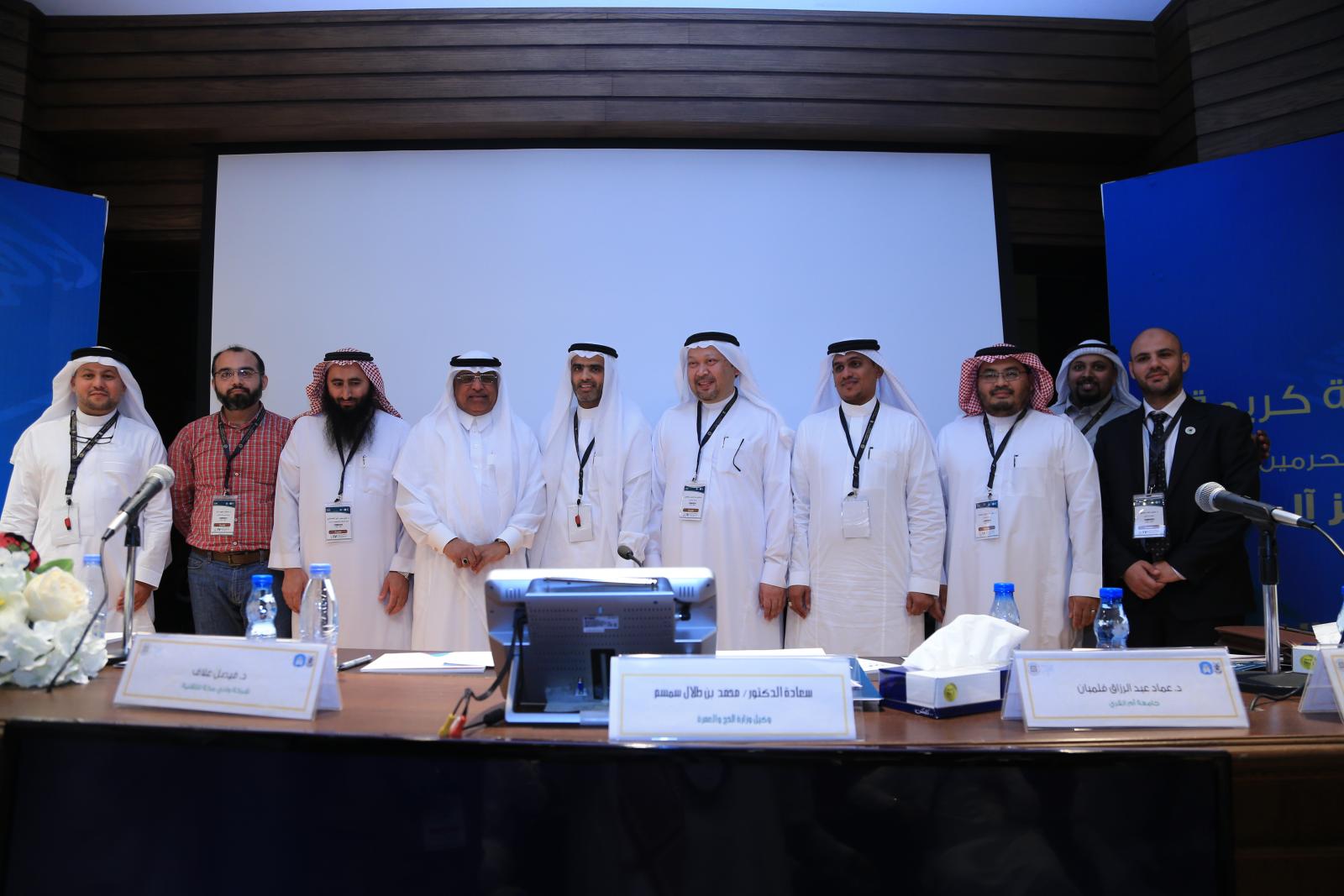
As part of the 17th Scientific Forum for Hajj, Umrah and Visit Research, the 7th Scientific Meeting on “Technologies and their Applications” was held with the participation of a select group of researchers and specialists from universities and research centers. Deputy Minister for Planning and Development, Deputy Minister for Transportation, Ministry of Hajj and Umrah, Dr. M. Mohammed Talal Simsim presided the Meeting, where participants discussed several research papers on different topics that deal with some issues and how to overcome the obstacles faced by pilgrims and Umrah performers. During the Meeting, Wadi Makkah’s CEO Dr. Faisal Al-Alaf presented a scientific paper on “The Story of Wadi Makkah’s Business Transformation from Scientific Research to the Labor Market”. In that paper, Dr. Al-Alaf explored Wadi Makkah’s experience and contribution to develop scientific researches and innovative ideas into patents which can be turned into Hi-Tech products traded on the markets, according to the strategic objectives the Kingdom seeks to implement within the frame of transformation towards knowledge-based economy and consistent with the 2020 National Plan Objectives, as well as the Kingdom’s 2030 Vision. In the same vein, Dr. Al-Alaf highlighted the practical steps taken by Wadi Makkah to sign several agreements with government agencies and private institutions to leverage such technology products and their applications in the services provided.
In a working paper titled: “Mass Motion Sensing to Predict and Prevent Mass Collison", Researchers Abdu bin Mohammed Jubari and Mohamed Al Salem from Jazan University, as well as Seguin Sonak from Missouri State University reviewed the possible ways to avoid the shortcomings of mass stampede during Hajj, attributing the most prominent causes of incidents to the motion of big masses in the opposite direction leading to collision among human goops. They suggested to use a new technology called (Bluetooth Low Energy – BLE), where every pilgrim is given a bracelet-like chip connected to towers alongside the pathways. These towers receive notifications from the BLE chips initiating immediate action.
They confirmed completing the design of protocols and algorithms whereby warnings are sent from BLEs to towers, which are handled afterwards by the central point.
From the College of Telecommunication and Information in Riyadh, Dr. Ali Hassan Qahtani presented a research paper titled: “Wireless Sensor Network Using Massive MIMO to Multi-Monitor the Holy Sites During the Season of Hajj”. In this paper, Dr. Ali could use wireless sensor network (WSN) with several nodes distributed over a large area using Massive MIMO in fixed and mobile sensors to transmit top-quality huge data very quickly, enabling multi-purpose observation and monitoring of the Holy Sites during Hajj.
In a paper entitled “Automatic Distribution of Mina Camps to Increase Capacity and Efficiency”, Dr. Mohammed Khalid Yusuf, Essam bin Ali Khan and Ahmad Ezzat Al-Sulaibi – from The Custodian of the Two Holy Mosques Institute for Hajj and Umrah – stressed the need to use “optimization techniques” to develop the distribution of Mina camps. These techniques take into consideration a number of specific constraints that can be divided into hard and soft. “The application of these techniques will help maximize the benefits from Mina Camps and increase their capacity effectively, especially as Mina is one of the critical points in Hajj management, given its limited space which is required to accommodate all pilgrims for three consecutive days, in addition to Yamu Al-Tarwiah (8th day of Dhul-Hijjah).”, they added.
In a joint paper on “Building a Model to Simulate the Mass Motion Around the Ka’bah”, Dr. Emad Felemban, Khalid Saad Al-Qahtani, Abdullah Noor Hawsawi and Abdullah Saeed Al Shehri – from UQU College of Computers and Information Systems – unanimously highlighted the importance of developing a model to simulate the crowd’s movement around the Ka’bah using “MassMotion”, which is one of the most advanced pedestrian simulation tool. They stressed that the model will be available to researchers and those interested for further development and benefit in other researches.
They noted that they have started the experiment by collecting the necessary data through cameras, then analyzing them to obtain the necessary motion factors to build the simulation model, through developing the required environment model using 3D design software, designing the movement patterns that are near to the real-life motion around the Ka'bah. Modelling is ready for entry into and exit from Hijr Ismail – Peace be upon him, standing by the starting line for each run, the crowd’s movement around the Shrine of Ibrahim - peace be upon him - as well as the impact of standing to greet Black Stone, to stand by Al-Multazam and the door of Ka'bah. The team also worked on showing some results such motion densities.
From Wadi Makkah, Dr. Sultan Khan, Anas Basalamah, Mohamed Amin and Shoaib Khan presented a paper on “Developing an Analytical System to Manage Masses in the Holy Mosque”, where they pointed to developing a vision and a framework to automatically analyze the incessant video streams in order to manage masses during Hajj in both Makkah and Madinah to leverage their spatial and time-related features.
They confirmed employing statistical analysis of the masses’ speed and direction, which fall under mass motion, pointing out that such a study will result in extrapolated images to develop the computerized visualization technology to help assess the crowds’ numbers, size and density.